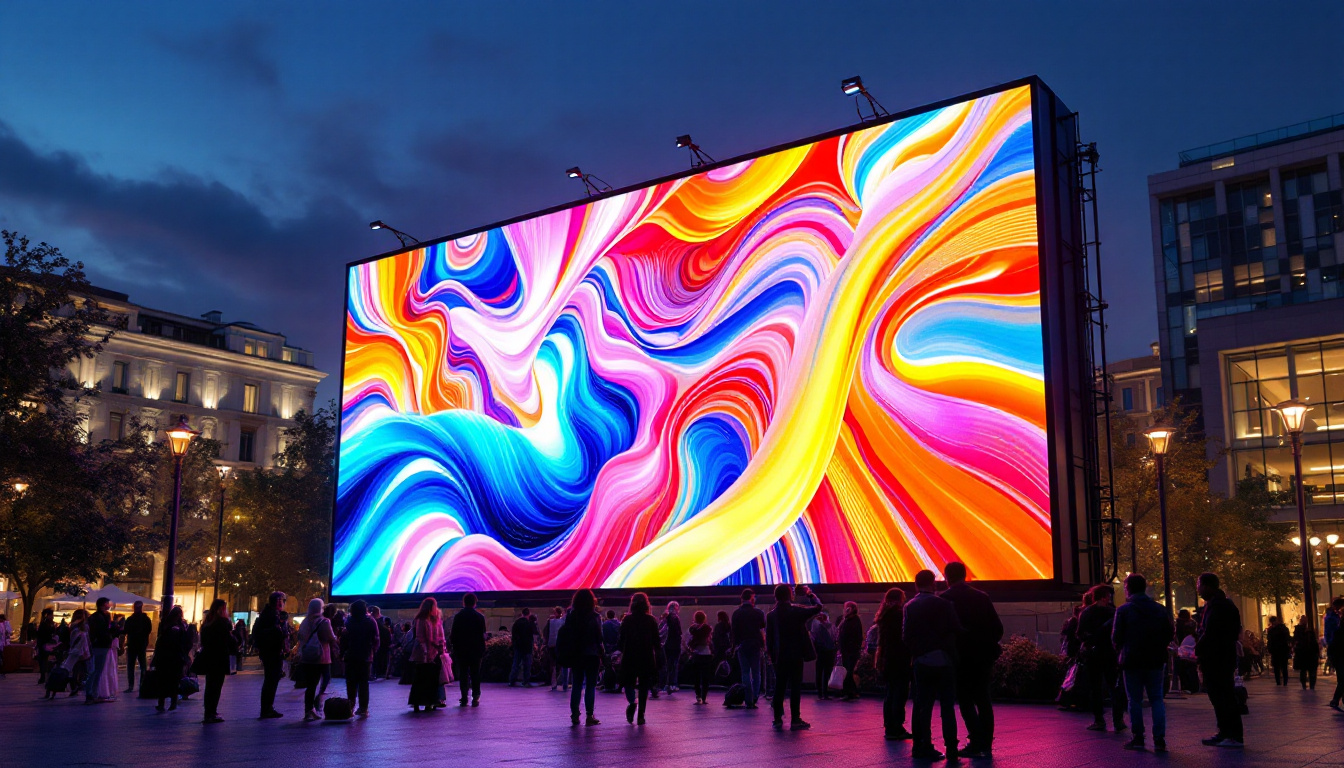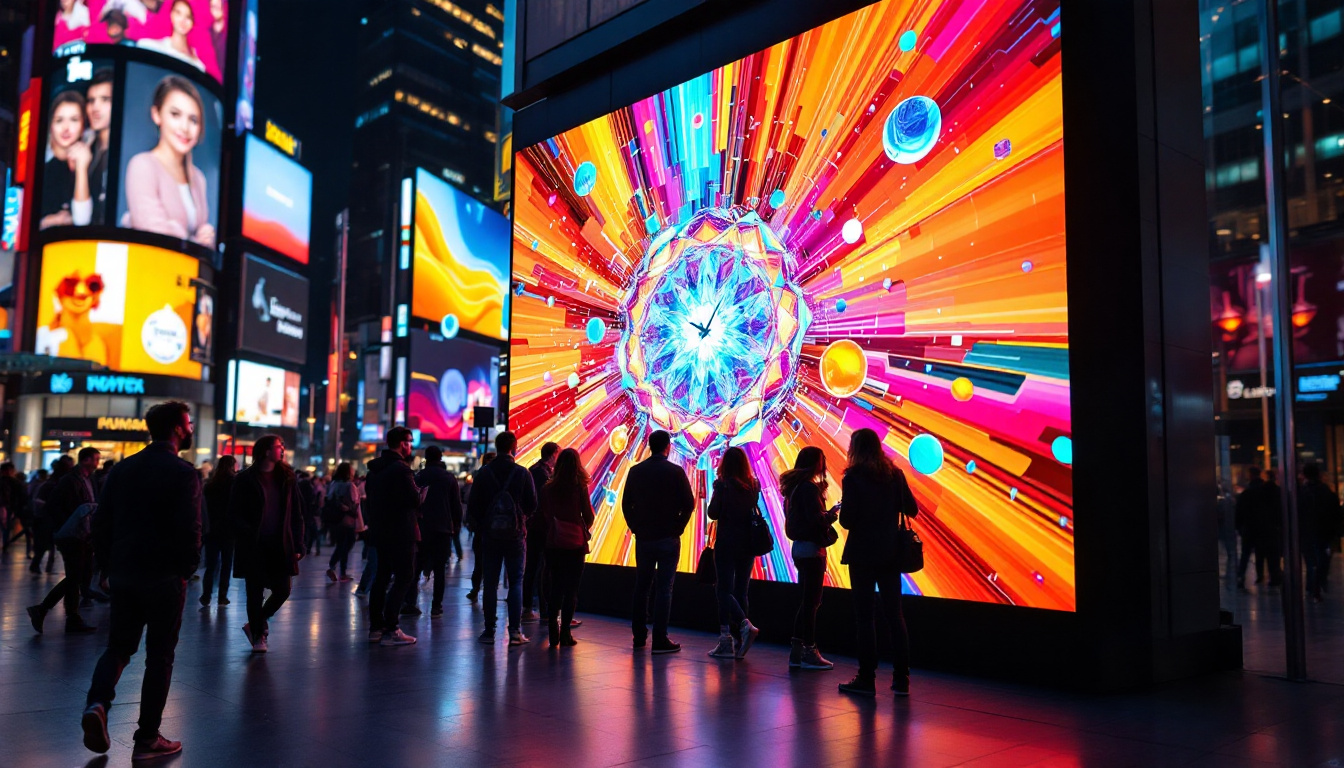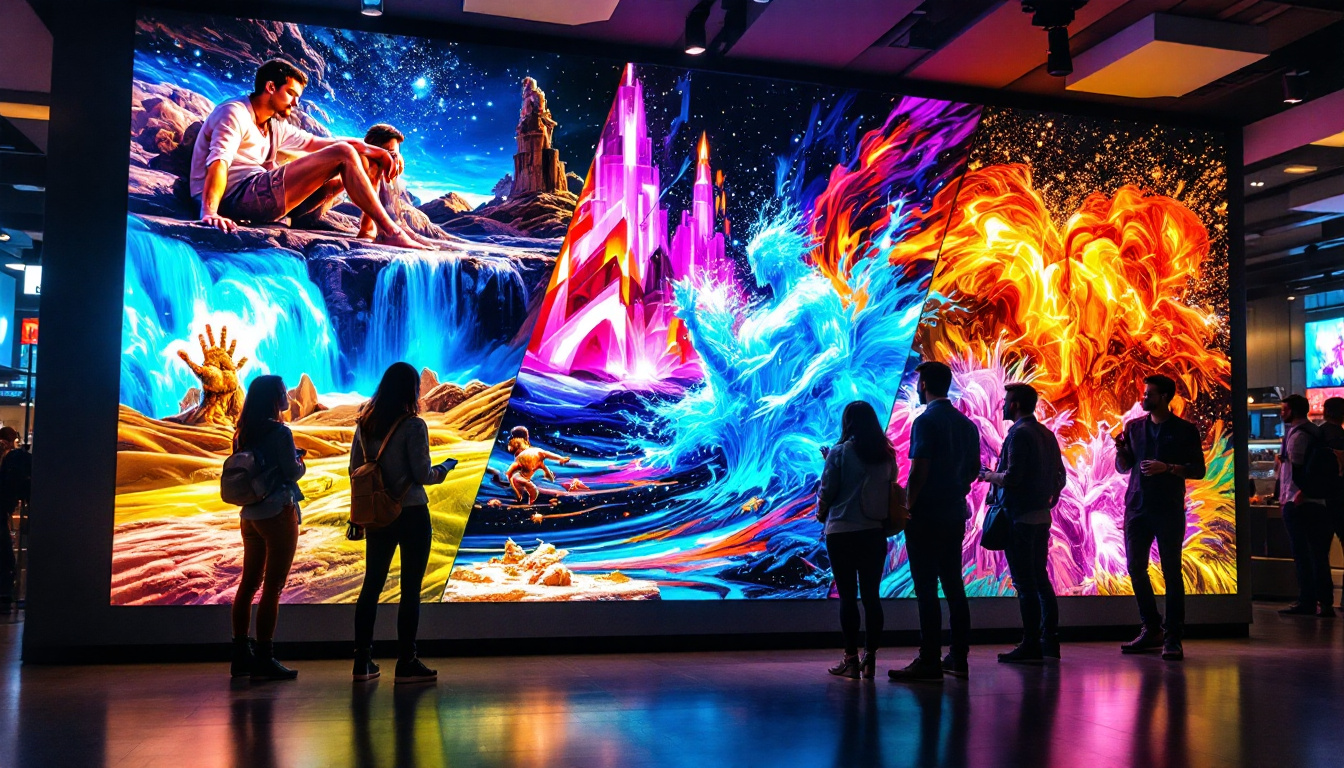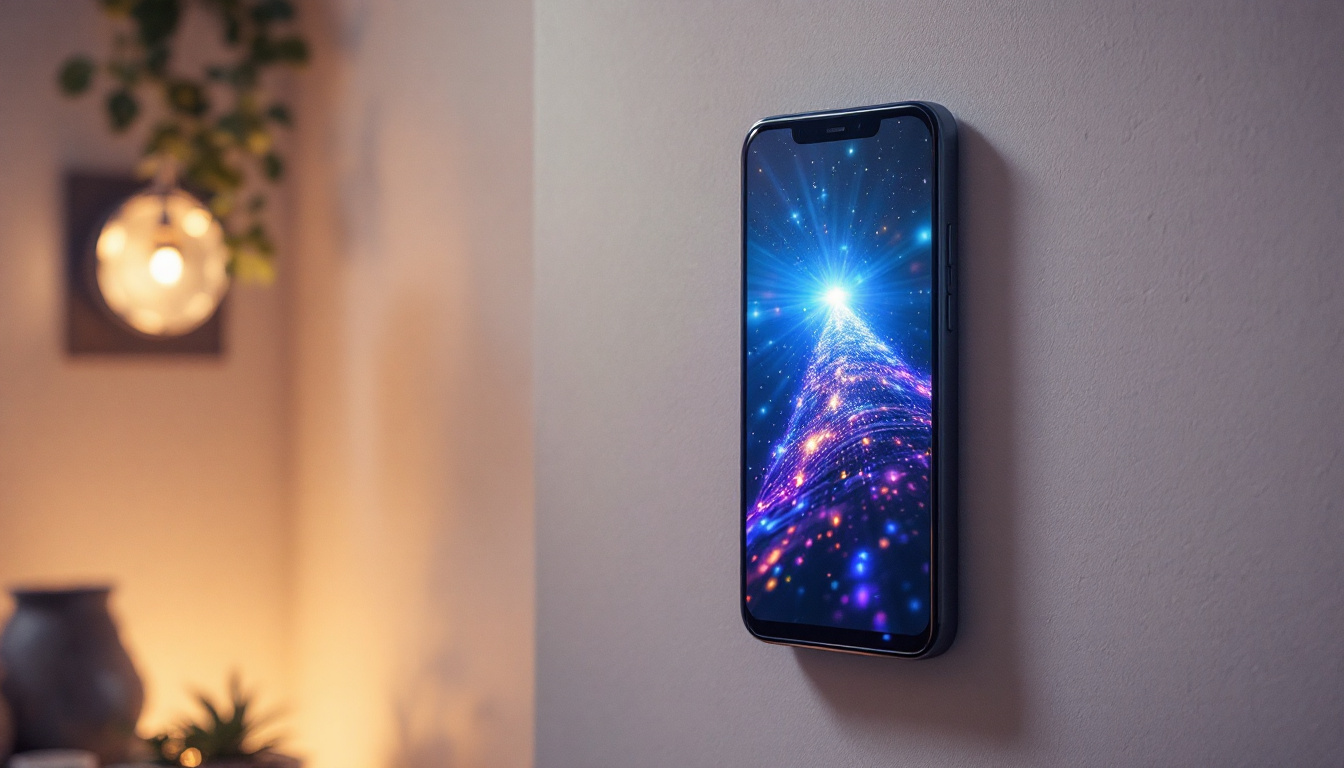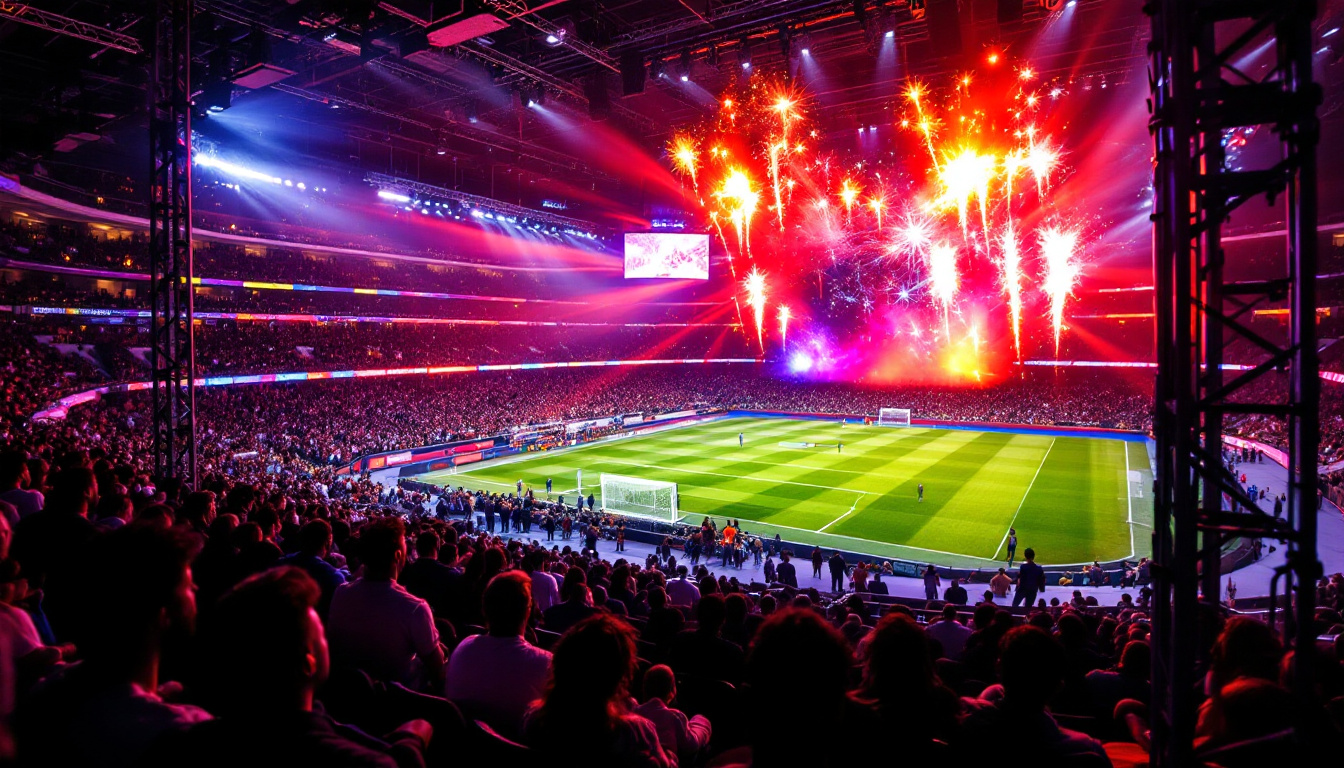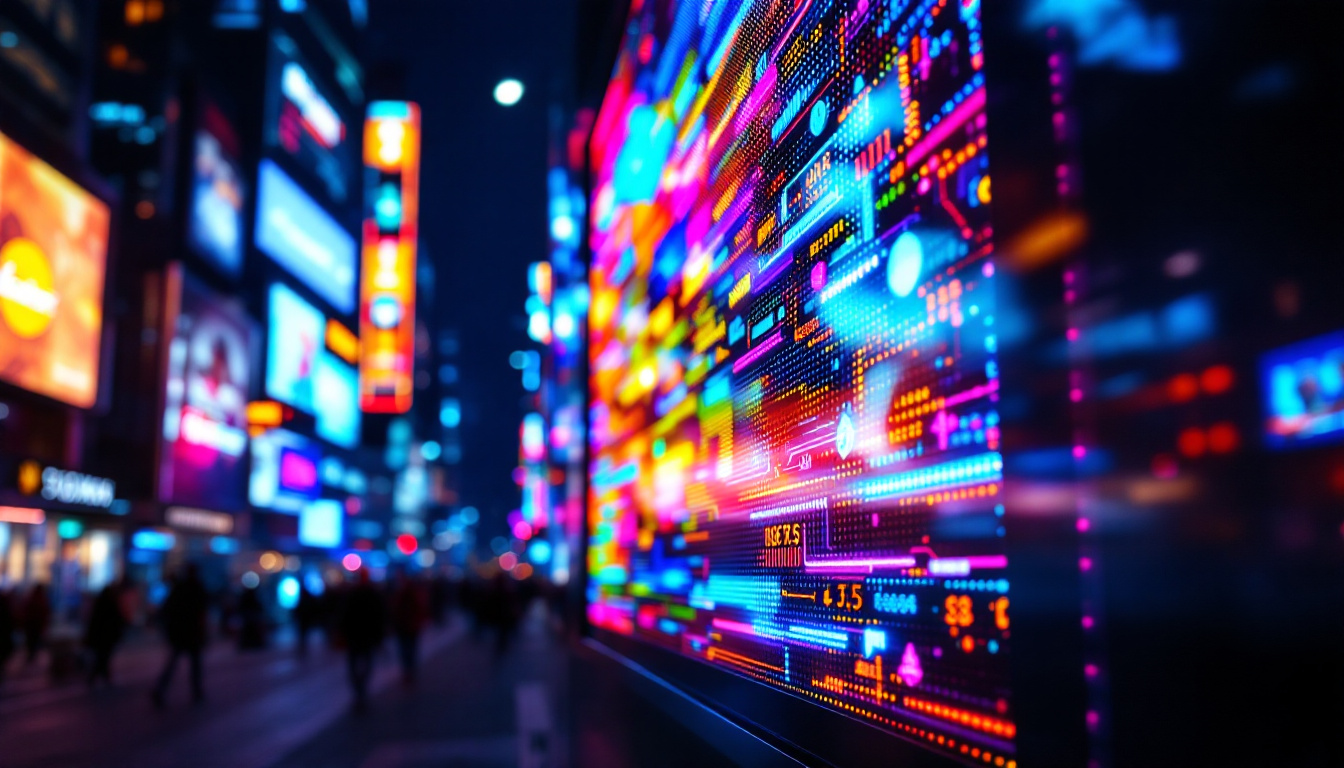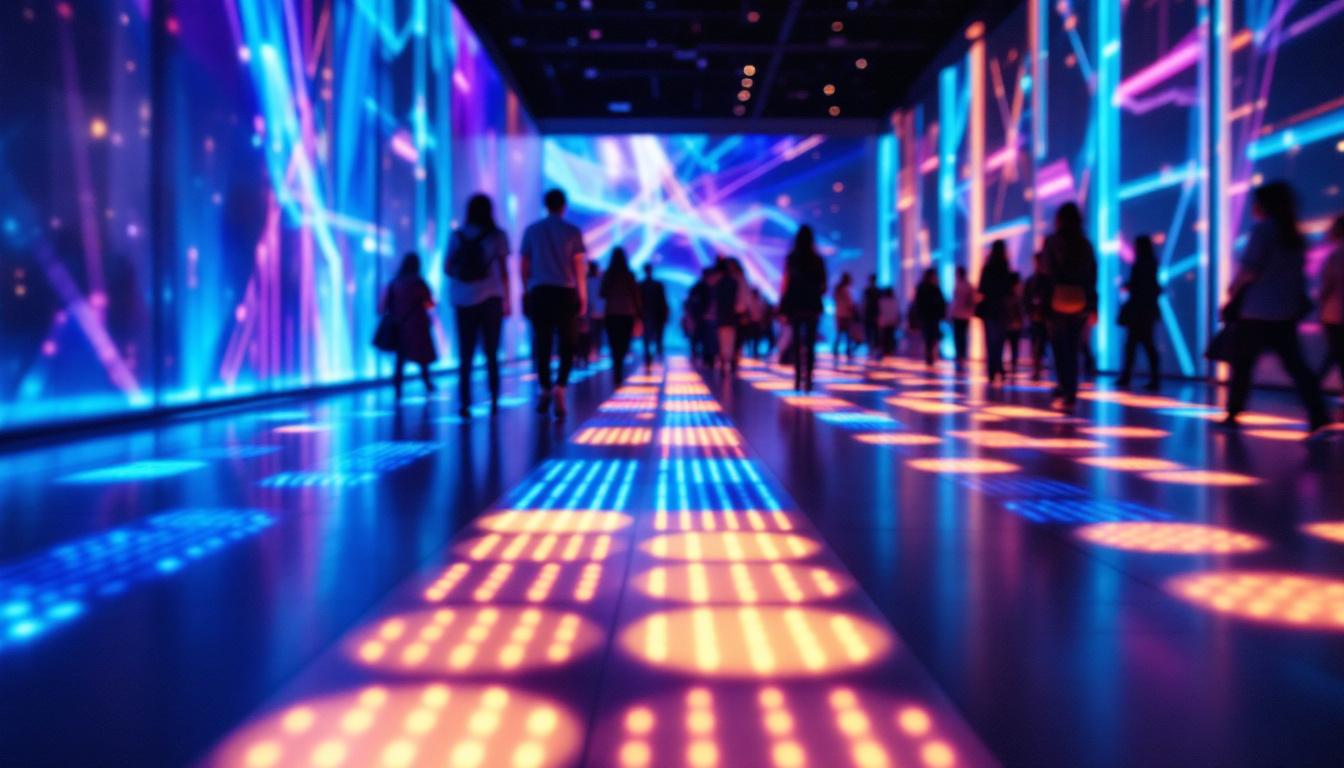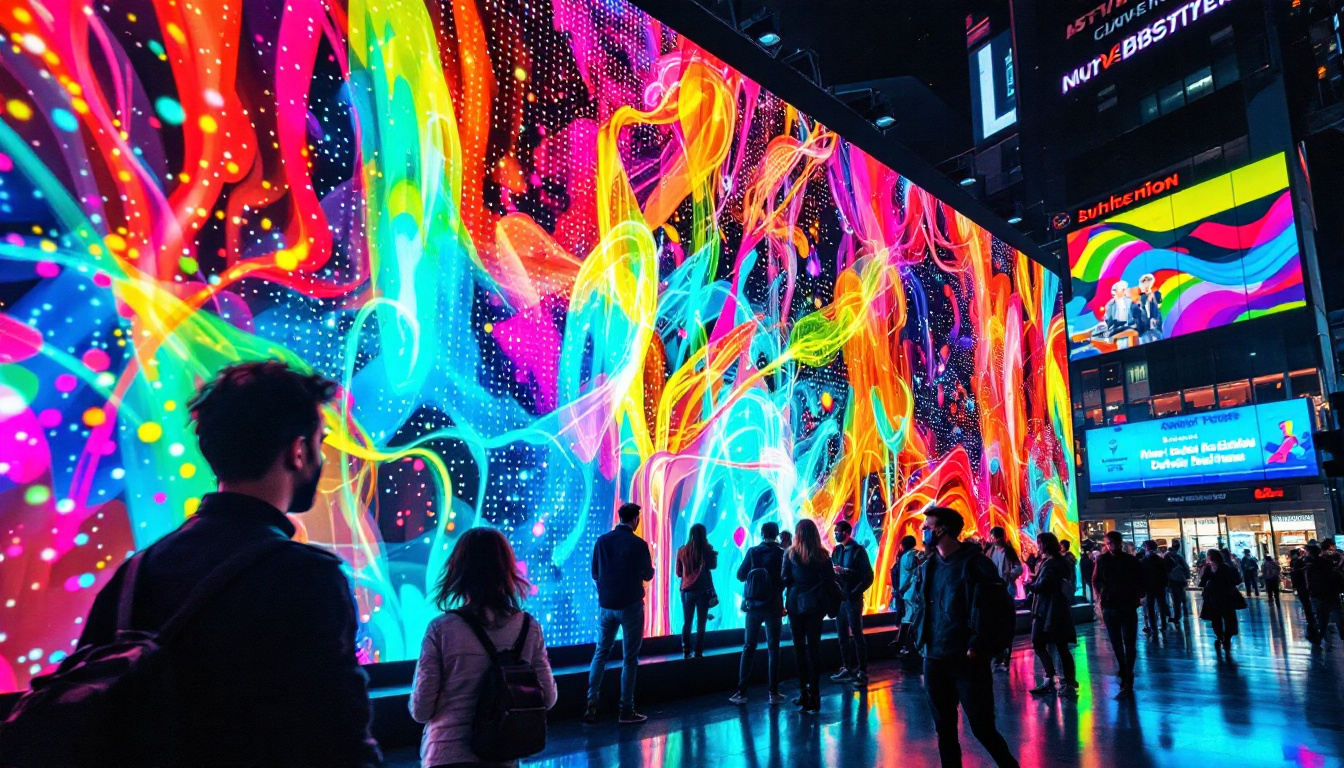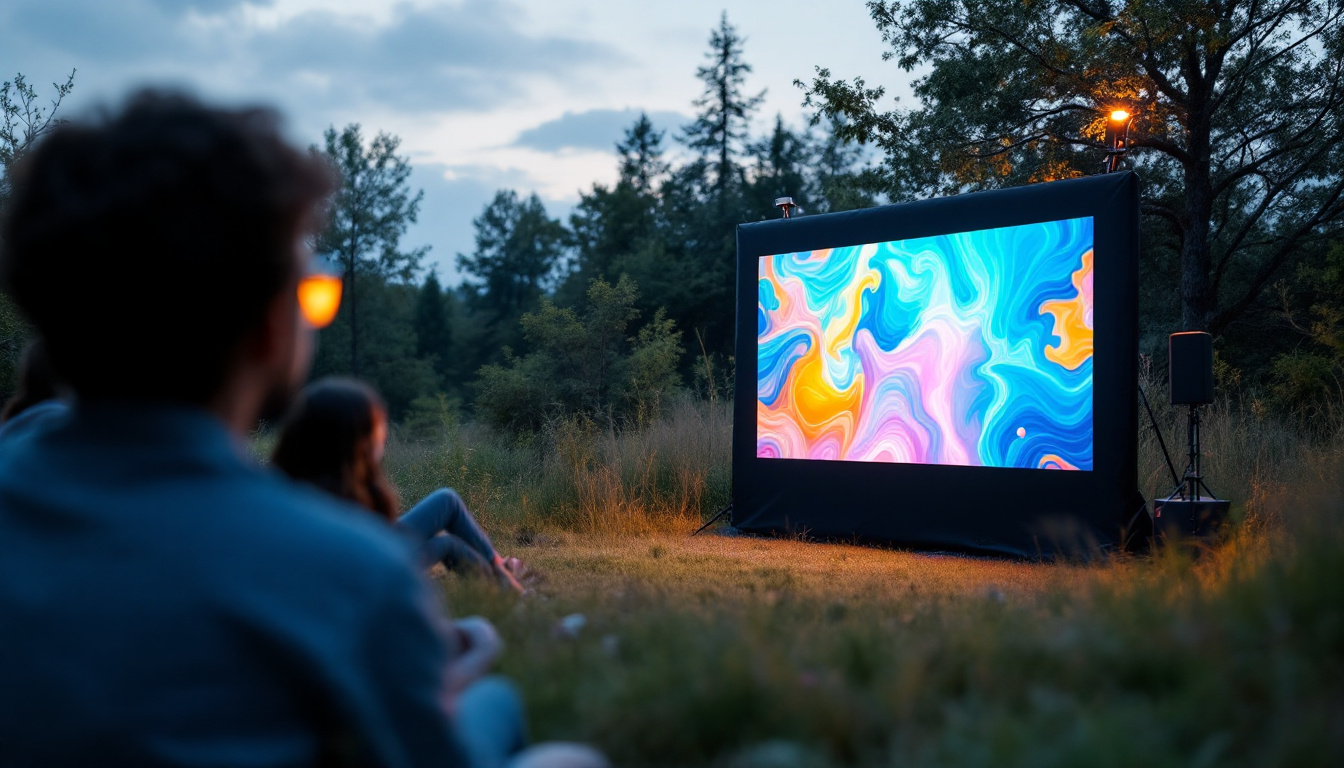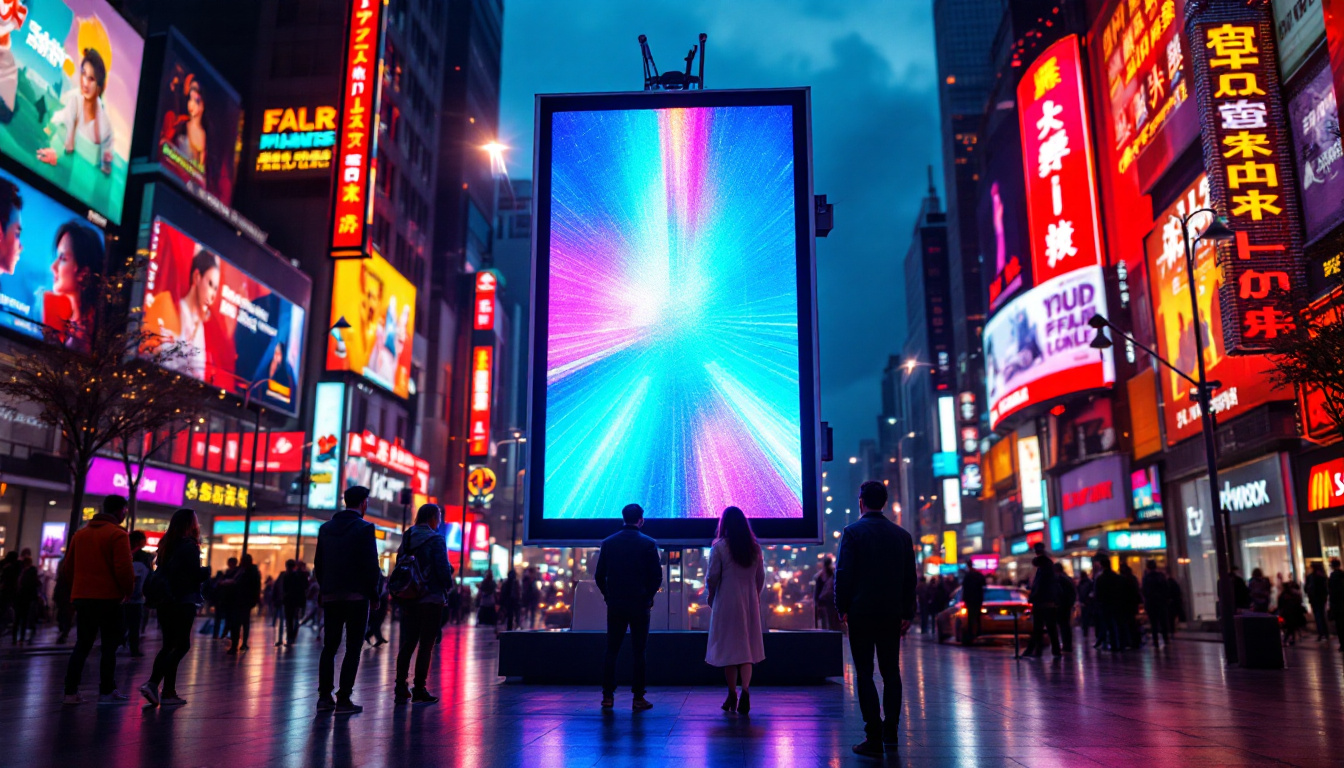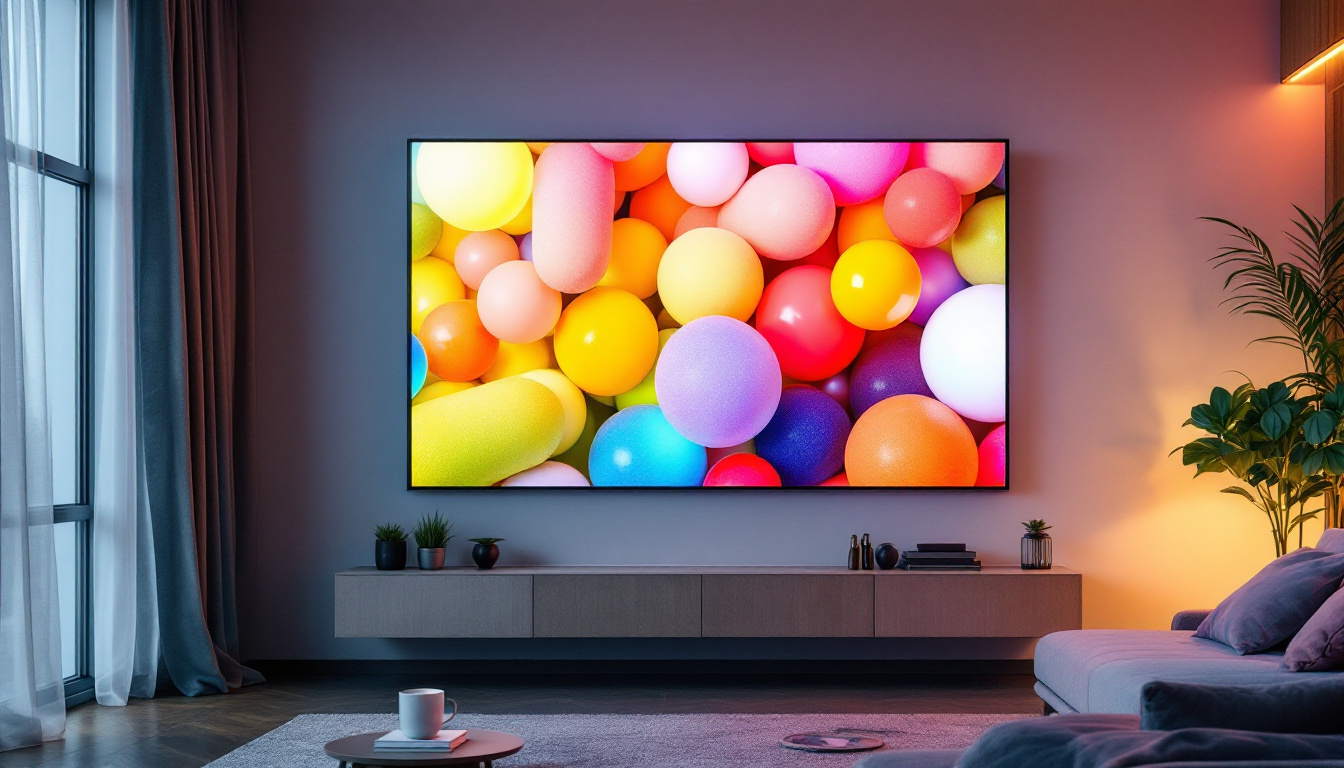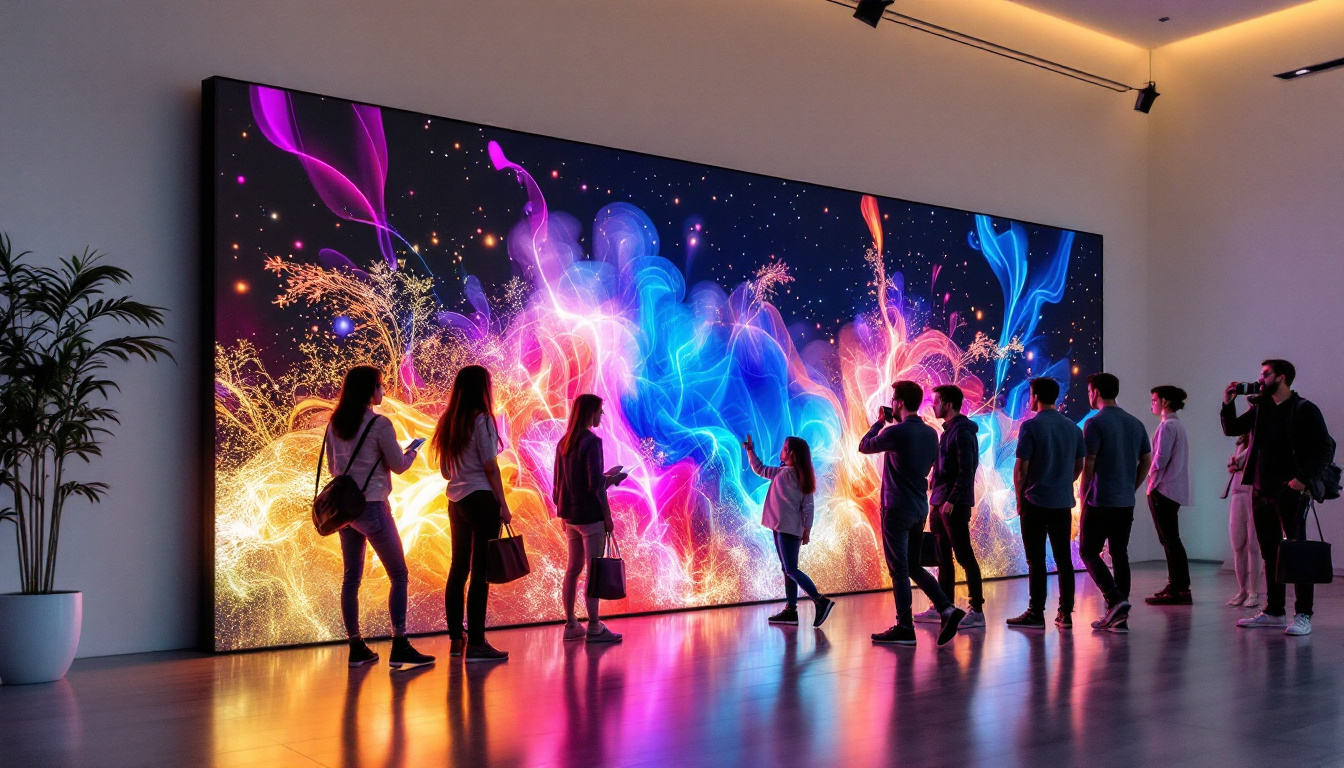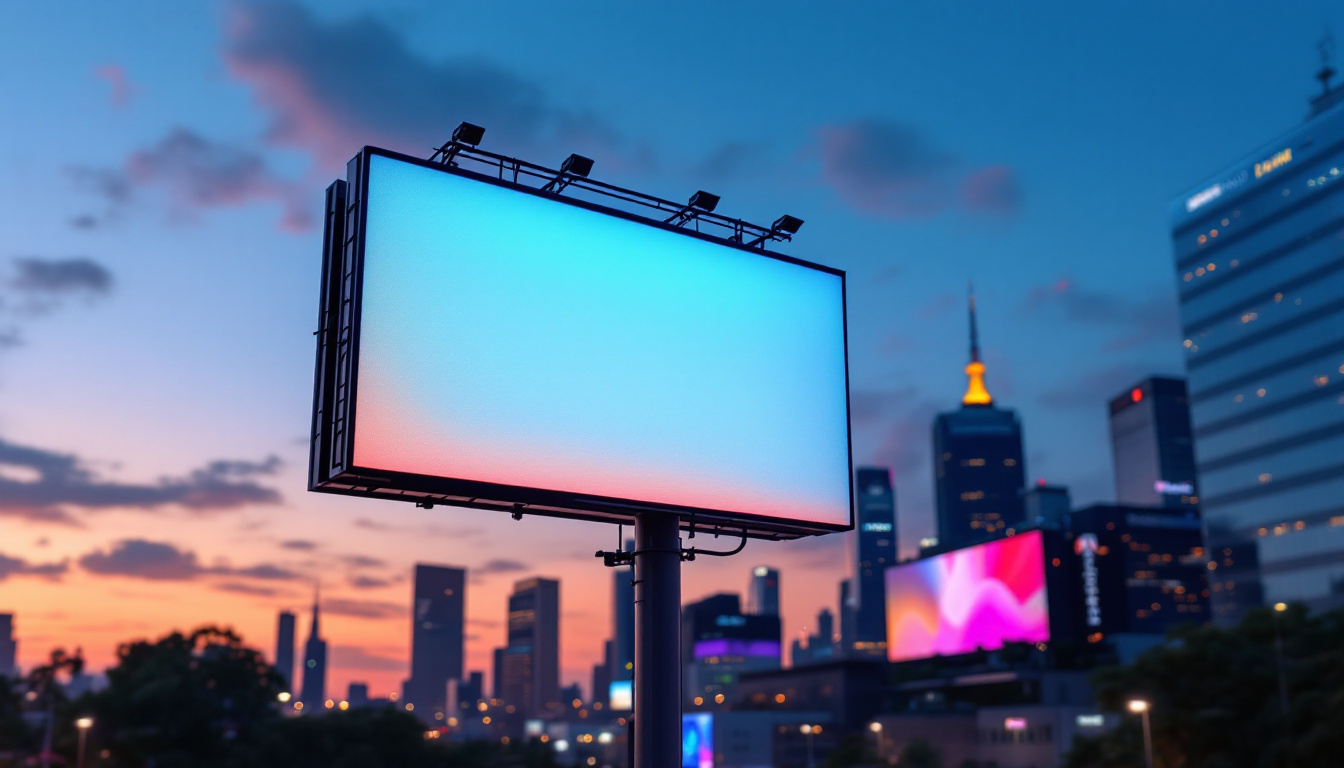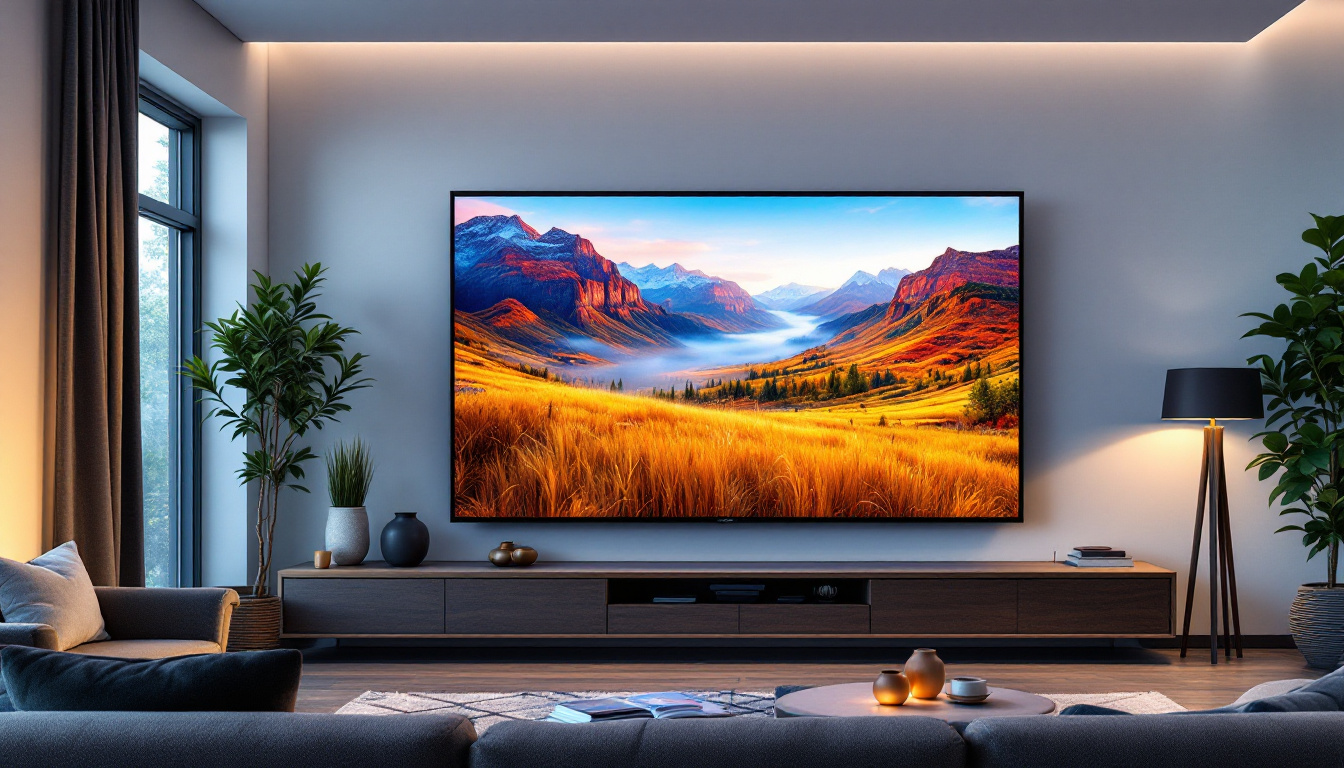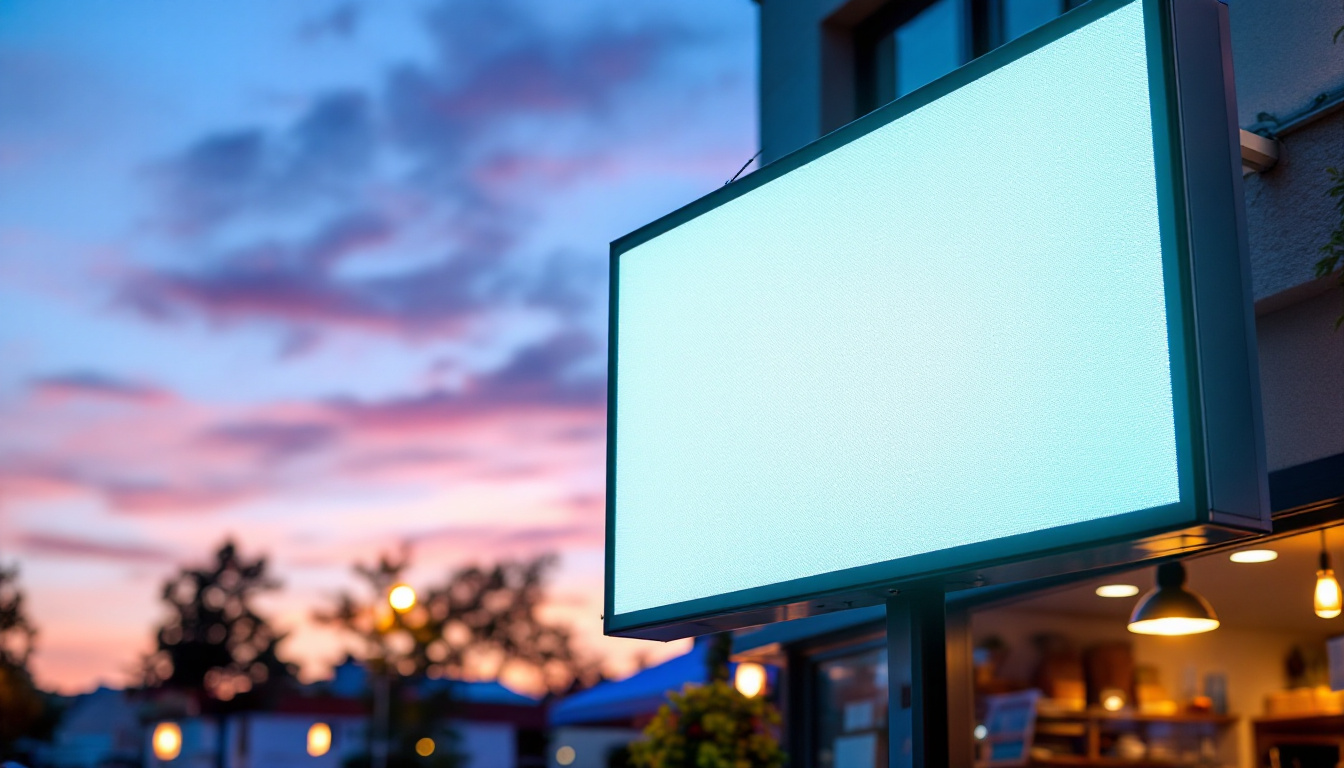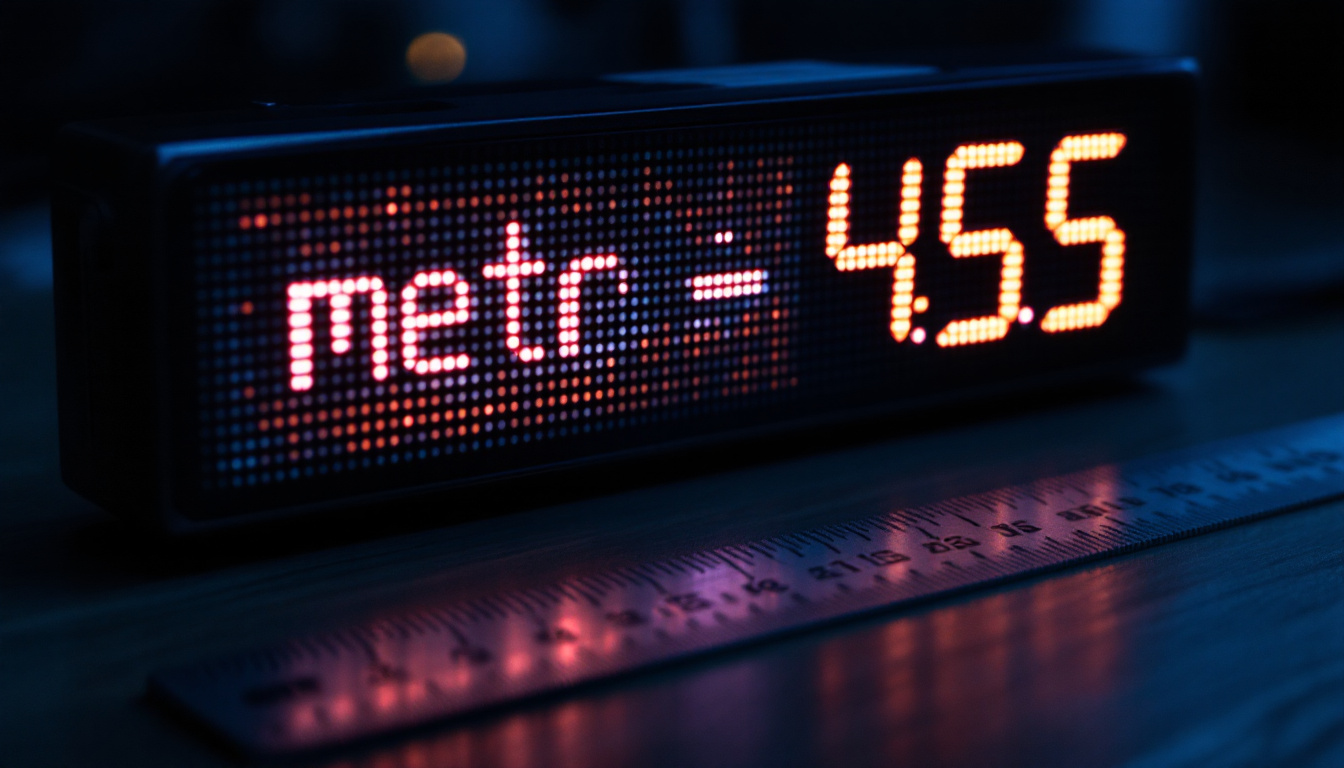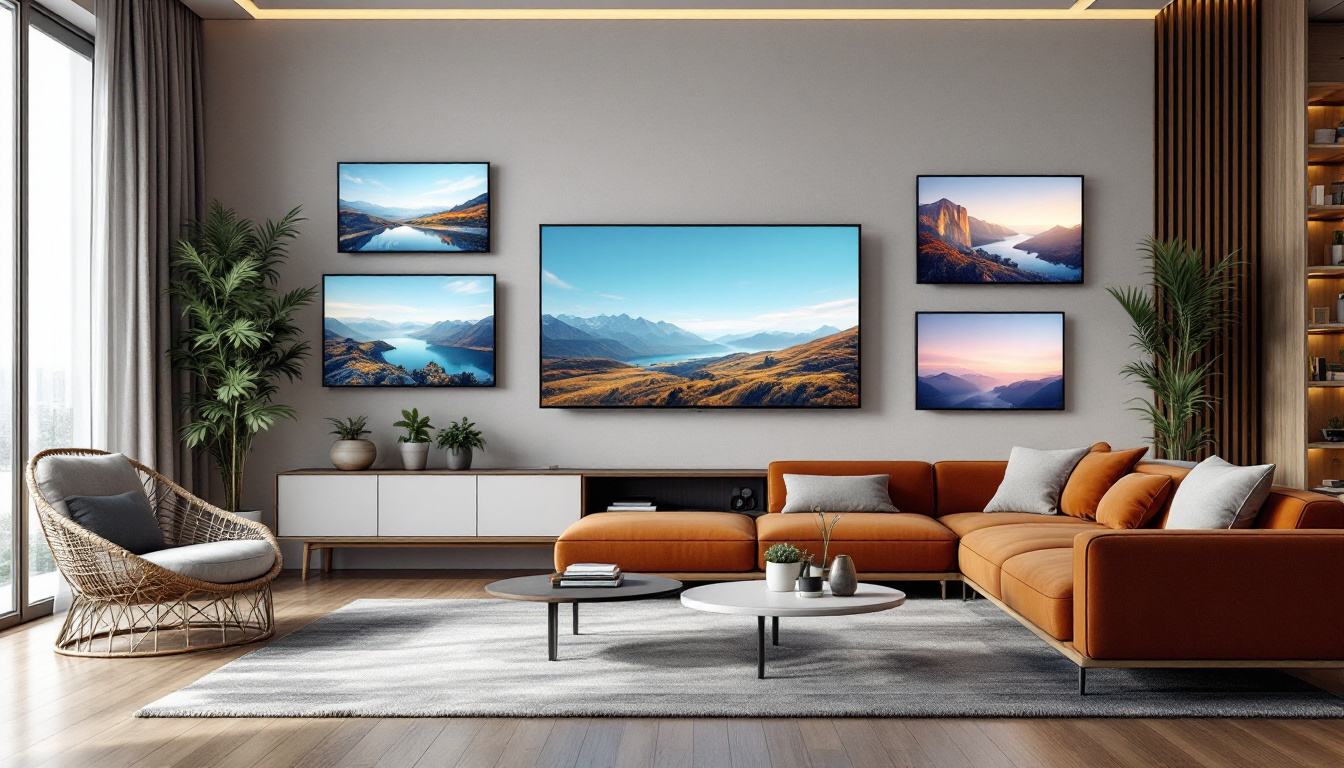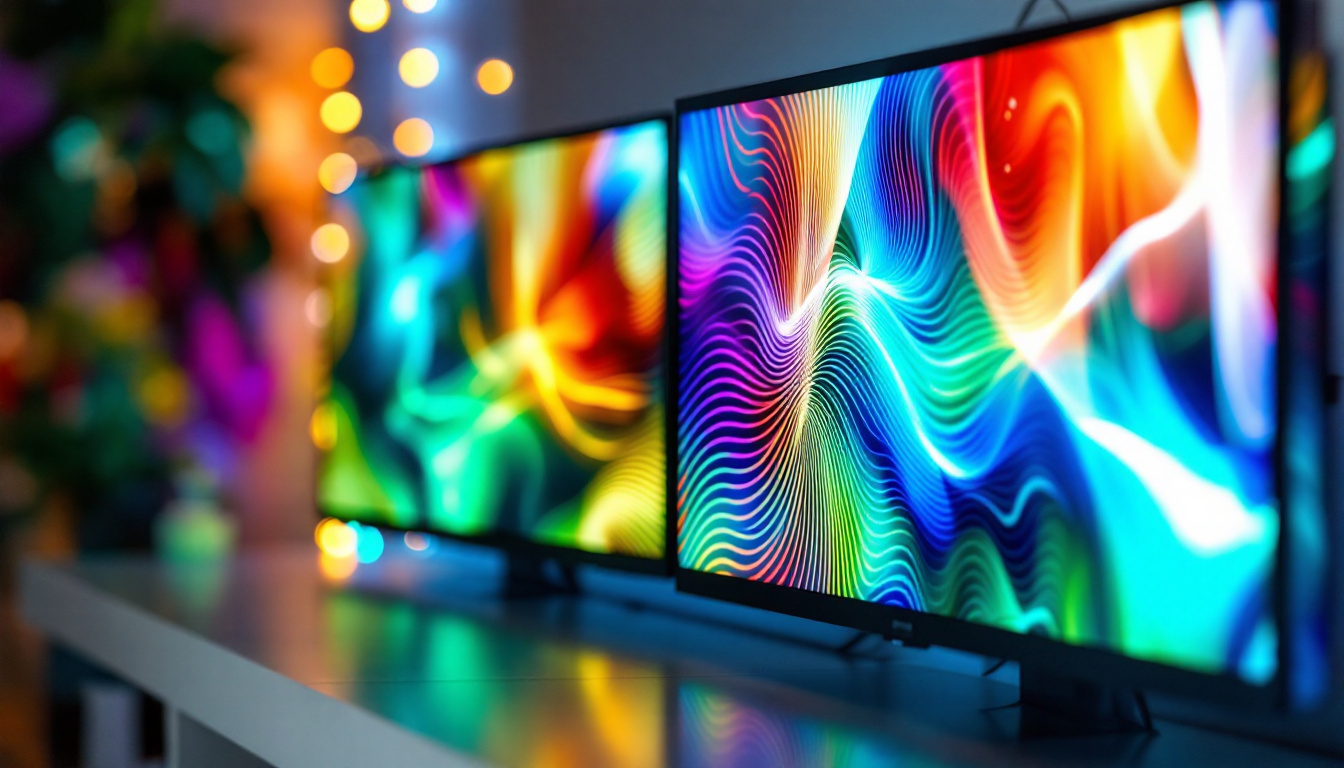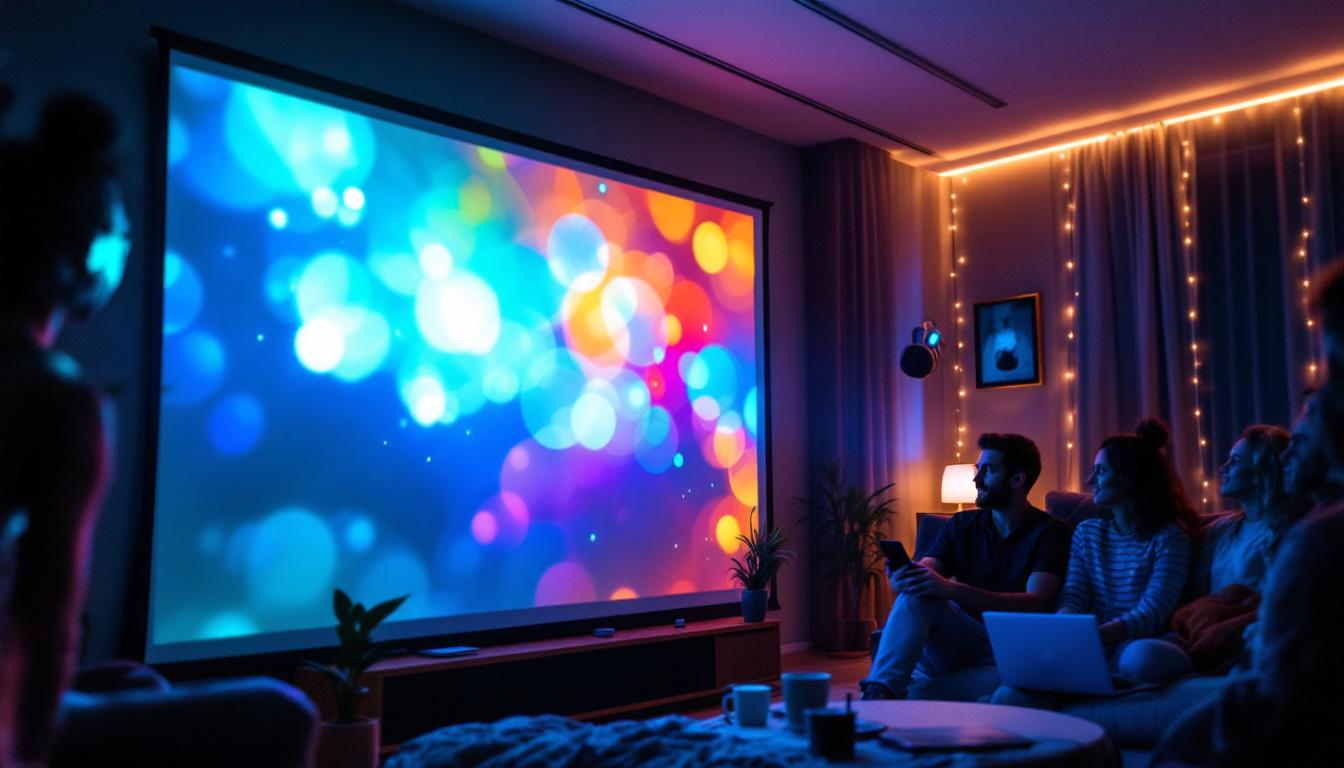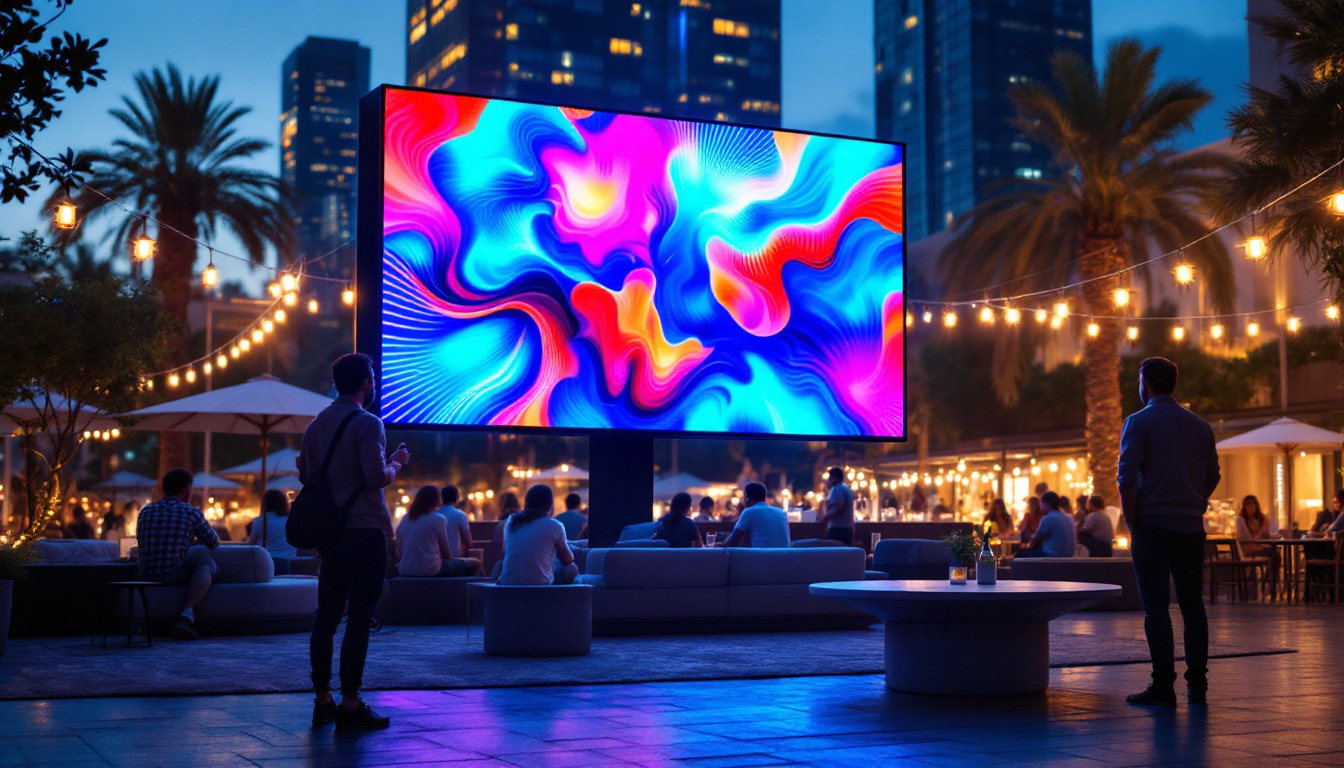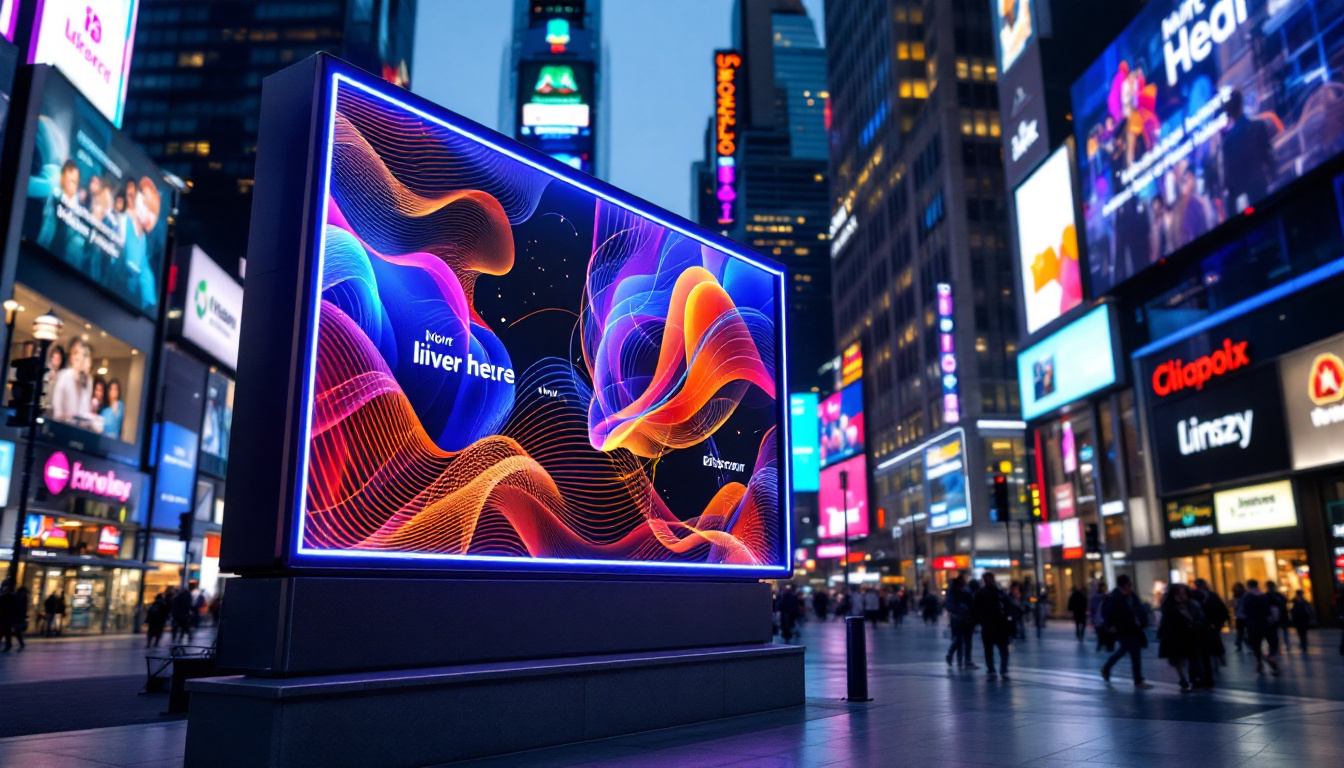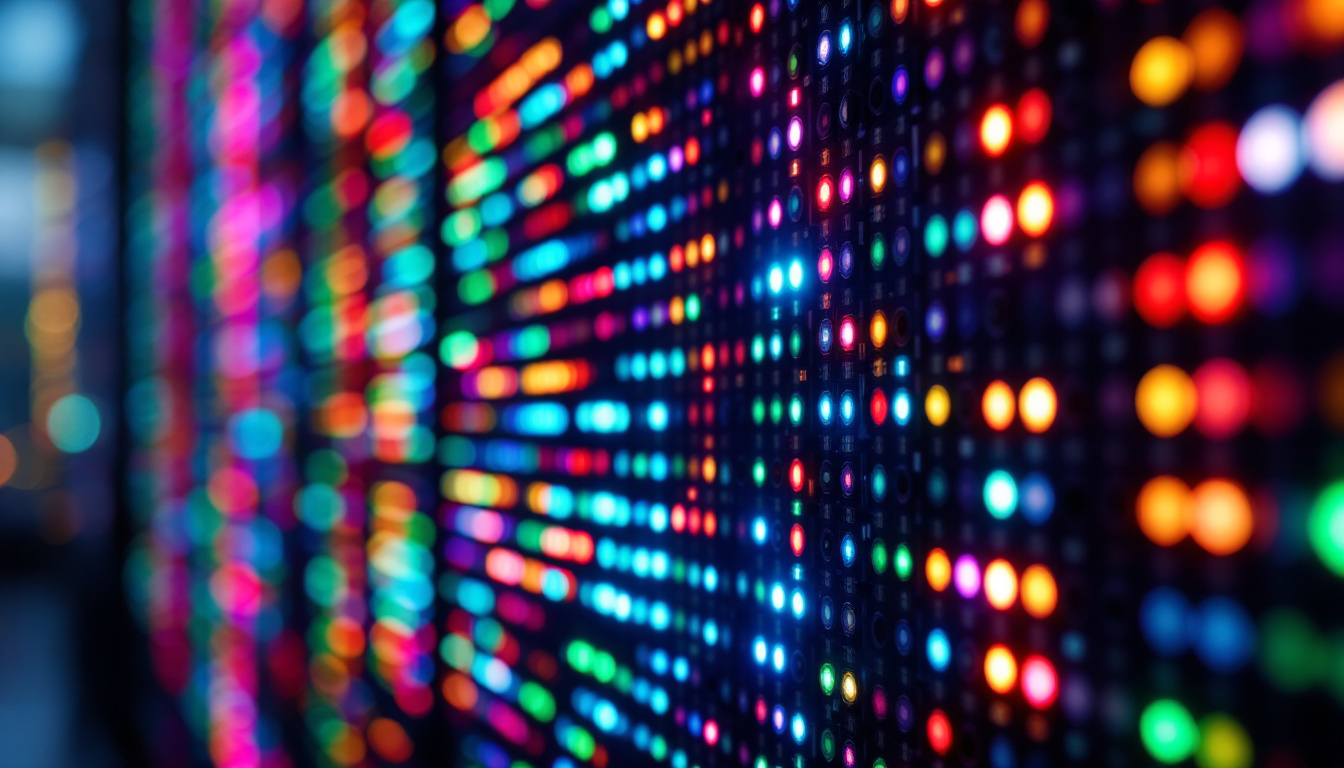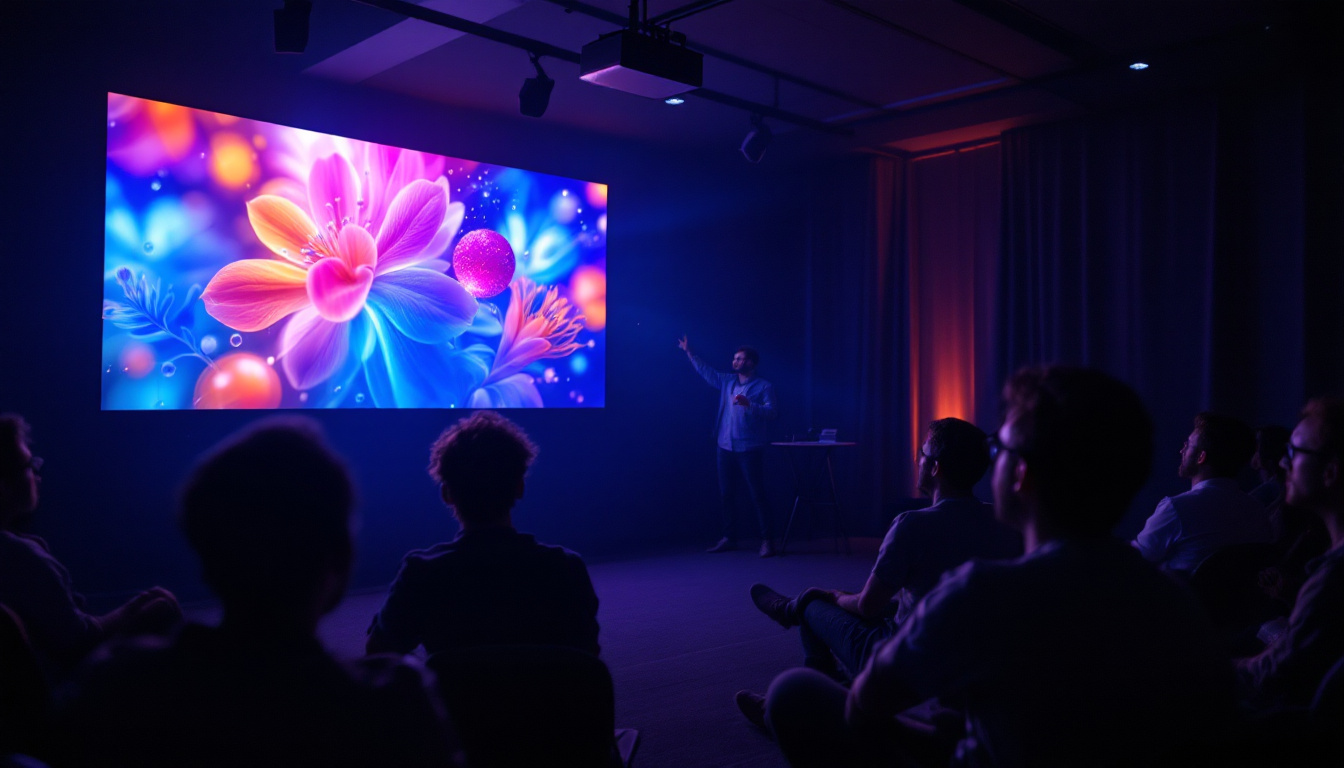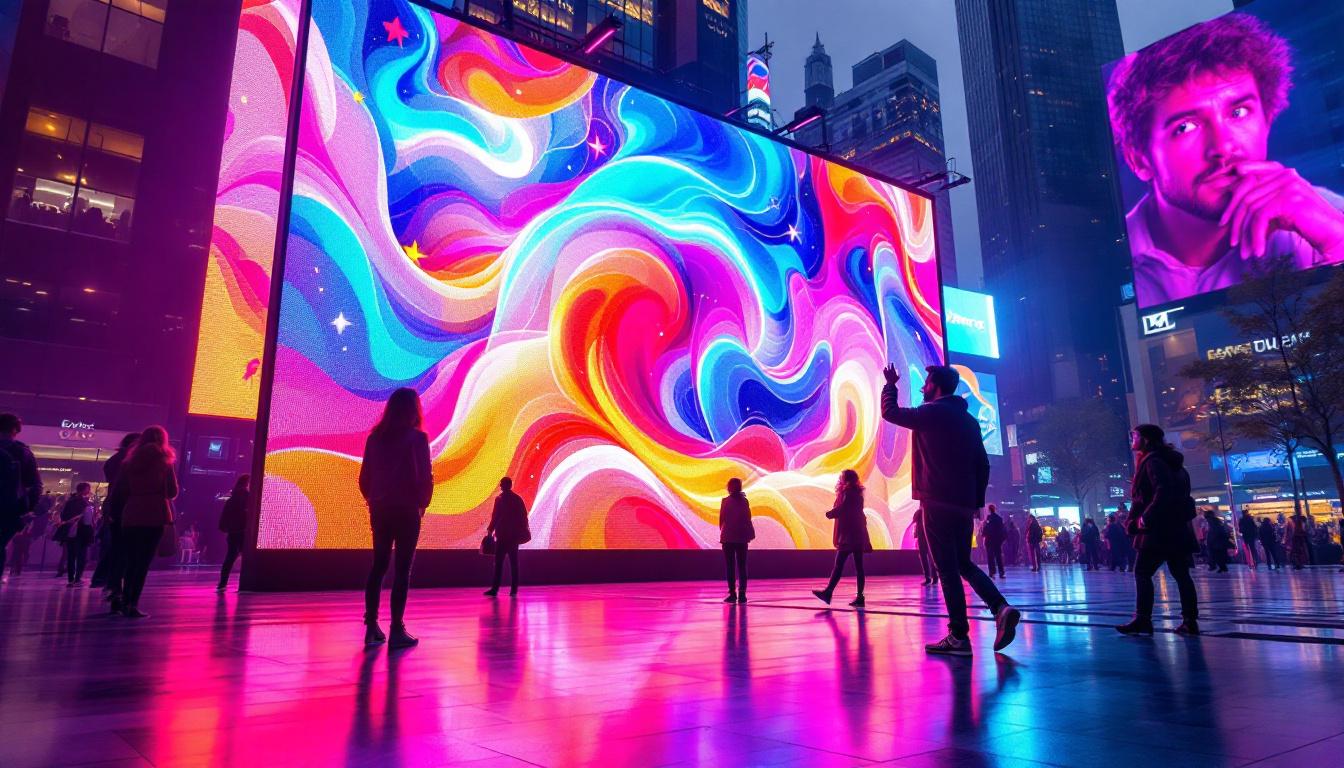In recent years, LED displays have transformed the way information is conveyed in public spaces. These vibrant, energy-efficient screens are not only eye-catching but also versatile, making them an essential tool for businesses, events, and advertising. This article delves into the workings of outdoor LED displays, their benefits, applications, and future trends.
Understanding LED Technology
Light Emitting Diodes (LEDs) are semiconductor devices that emit light when an electric current passes through them. The technology behind LEDs has advanced significantly, leading to their widespread use in various applications, particularly in outdoor displays. Their energy efficiency, longevity, and versatility have made them a preferred choice over traditional lighting solutions, revolutionizing how we illuminate our surroundings and convey information.
How LEDs Work
At the core of an LED is a chip made from a combination of materials that produce light when energized. This process occurs through electroluminescence, where electrons recombine with holes within the device, releasing energy in the form of photons. The color of the light emitted depends on the materials used in the semiconductor. For instance, using different semiconductor materials can yield different wavelengths of light, allowing for a wide range of colors to be produced. This characteristic is not only essential for aesthetic purposes but also plays a crucial role in applications such as signaling and display technologies.
Outdoor LED displays typically consist of multiple LEDs arranged in a grid to create a larger image. Each pixel on the screen is made up of red, green, and blue (RGB) LEDs, which combine to produce a full spectrum of colors. This RGB configuration allows for high-resolution images and videos, making them ideal for advertising and information dissemination. Additionally, advancements in LED technology have led to improved brightness and contrast ratios, ensuring that these displays remain visible even in direct sunlight, which is a critical factor for outdoor applications.
Types of Outdoor LED Displays
Outdoor LED displays come in various types, each designed for specific applications. The most common types include:
- Fixed LED Displays: These are permanently installed screens used for advertising or information display in high-traffic areas. Their robust construction makes them suitable for long-term outdoor use, often equipped with weatherproofing features to withstand the elements.
- Mobile LED Displays: These are portable screens mounted on trailers or trucks, ideal for events, parades, and temporary promotions. Their flexibility allows for dynamic advertising opportunities, as they can be relocated to different venues as needed, capturing the attention of diverse audiences.
- LED Billboards: Large-scale displays that dominate cityscapes, often used for high-impact advertising. These billboards can be programmed to display a variety of content, from static images to dynamic videos, making them a powerful tool for marketers looking to engage consumers in a visually compelling way.
In addition to these common types, there are also specialized LED displays designed for unique environments and purposes. For example, transparent LED screens are increasingly popular in retail settings, allowing for eye-catching displays that do not obstruct views. Similarly, curved LED panels are being used to create immersive experiences in venues such as theaters and concert halls, enhancing the overall atmosphere. The versatility of LED technology continues to inspire innovation across various sectors, pushing the boundaries of what is possible in visual communication.
Benefits of Outdoor LED Displays
The adoption of outdoor LED displays has surged due to their numerous advantages. From energy efficiency to high visibility, these displays offer benefits that traditional signage cannot match.
Energy Efficiency
One of the most significant advantages of LED technology is its energy efficiency. LED displays consume significantly less power compared to traditional neon or incandescent lights. This not only reduces operational costs but also contributes to environmental sustainability. Many businesses are now prioritizing energy-efficient solutions, making LED displays an attractive option. Additionally, the longevity of LED lights—often lasting up to 100,000 hours—means that businesses can save on maintenance and replacement costs over time. This durability further enhances the appeal of LED technology, as it ensures that companies can invest in a solution that provides long-term value.
High Visibility and Brightness
Outdoor LED displays are designed to be highly visible, even in direct sunlight. The brightness of LEDs can be adjusted to ensure that content remains clear and legible at all times. This feature is particularly beneficial for advertising, as it ensures that messages reach a wide audience regardless of the time of day or weather conditions. Furthermore, the color vibrancy and contrast offered by LED displays can capture attention more effectively than traditional signage, making them ideal for bustling urban environments where competition for viewers’ attention is fierce. The ability to display a wide spectrum of colors also allows businesses to create eye-catching visuals that resonate with their brand identity.
Dynamic Content and Versatility
Unlike static signs, outdoor LED displays can showcase dynamic content that can be changed easily. Businesses can update their messages, images, and videos in real-time, allowing for timely promotions and announcements. This flexibility enhances engagement with the audience and can lead to increased foot traffic and sales. Moreover, the integration of social media feeds and interactive content can further elevate the viewer experience, encouraging passersby to engage with the display and share their experiences online. The adaptability of LED displays also means they can be utilized for various purposes, from advertising and event announcements to public service messages, making them a multifunctional asset for any organization.
Applications of Outdoor LED Displays
Outdoor LED displays are utilized across various sectors, each leveraging the technology to enhance communication and engagement.
Advertising and Marketing
One of the most prominent applications of outdoor LED displays is in advertising. Brands use these displays to promote products, services, and events to a broad audience. The ability to display vibrant images and videos captures attention more effectively than traditional billboards.
Moreover, advertisers can tailor content based on time, location, and audience demographics, making campaigns more targeted and effective. This adaptability significantly improves return on investment (ROI) for marketing efforts.
Transportation and Wayfinding
Outdoor LED displays are also widely used in transportation hubs, such as airports, train stations, and bus terminals. These displays provide real-time information about arrivals, departures, and delays, helping travelers navigate their journeys more efficiently.
Additionally, LED displays are employed for wayfinding in urban areas, guiding pedestrians and drivers to their destinations. The clear visibility and dynamic content make them an excellent tool for enhancing the user experience in busy environments.
Events and Entertainment
In the realm of events and entertainment, outdoor LED displays play a crucial role. Concerts, festivals, and sporting events utilize large LED screens to broadcast live performances, highlight key moments, and engage audiences. These displays create an immersive experience, allowing attendees to feel more connected to the event.
Furthermore, event organizers can use LED displays for branding, sponsorships, and real-time social media integration, enhancing the overall experience for participants and spectators alike.
Challenges and Considerations
While outdoor LED displays offer numerous benefits, there are challenges and considerations that stakeholders must address to maximize their effectiveness.
Cost and Investment
One of the primary challenges associated with outdoor LED displays is the initial investment. High-quality LED screens can be expensive, and businesses must weigh the upfront costs against the potential long-term benefits. However, many find that the return on investment justifies the expense, especially when considering energy savings and increased advertising revenue.
Maintenance and Durability
Outdoor displays are exposed to various environmental factors, including weather, dust, and temperature fluctuations. Regular maintenance is essential to ensure optimal performance and longevity. This includes cleaning the screens, checking for damaged LEDs, and updating software. Investing in durable, weather-resistant displays can mitigate some of these challenges.
Content Management
Creating and managing content for outdoor LED displays can be complex. Businesses must ensure that their messages are engaging, relevant, and appropriate for their target audience. Additionally, content should be updated regularly to keep it fresh and aligned with marketing campaigns. Utilizing content management systems can streamline this process, allowing for easier updates and scheduling.
Future Trends in Outdoor LED Displays
The outdoor LED display industry is continually evolving, driven by technological advancements and changing consumer preferences. Several trends are shaping the future of this dynamic field.
Integration with Smart Technology
As cities become smarter, outdoor LED displays are increasingly integrating with IoT (Internet of Things) technology. This integration allows for real-time data sharing, enabling displays to show relevant information based on environmental conditions, traffic patterns, and audience demographics. For instance, displays can adjust their brightness based on ambient light levels or showcase targeted advertisements based on nearby foot traffic.
Enhanced Interactivity
Future outdoor LED displays are expected to become more interactive, allowing users to engage with the content. Touchscreen capabilities, QR codes, and augmented reality (AR) features can enhance user experience, making displays not just passive information sources but interactive platforms for engagement.
Focus on Sustainability
As environmental concerns grow, the demand for sustainable solutions in advertising and display technology is on the rise. Future outdoor LED displays are likely to incorporate eco-friendly materials and energy-efficient technologies, further reducing their carbon footprint. Additionally, recycling programs for old displays may become more common, promoting a circular economy within the industry.
Conclusion
Outdoor LED displays are revolutionizing the way information is communicated in public spaces. Their energy efficiency, high visibility, and dynamic content capabilities make them an invaluable asset for businesses, events, and urban environments. As technology continues to evolve, the future of outdoor LED displays promises even greater interactivity, integration with smart technology, and a focus on sustainability.
Investing in outdoor LED displays can provide significant benefits, from increased brand visibility to enhanced audience engagement. As the landscape of advertising and communication shifts, embracing this technology is essential for staying competitive and relevant in today’s fast-paced world.
Discover LumenMatrix LED Display Solutions
Ready to elevate your brand’s presence and captivate your audience with unparalleled visual experiences? Look no further than LumenMatrix, the vanguard of LED display innovation. From the bustling streets to the heart of your events, our comprehensive range of LED display solutions, including Indoor and Outdoor LED Wall Displays, Vehicle LED Displays, and more, are designed to bring your vision to life with vibrancy and precision. Embrace the future of visual communication and check out LumenMatrix LED Display Solutions today to transform your message into a spectacular display of clarity and color.

